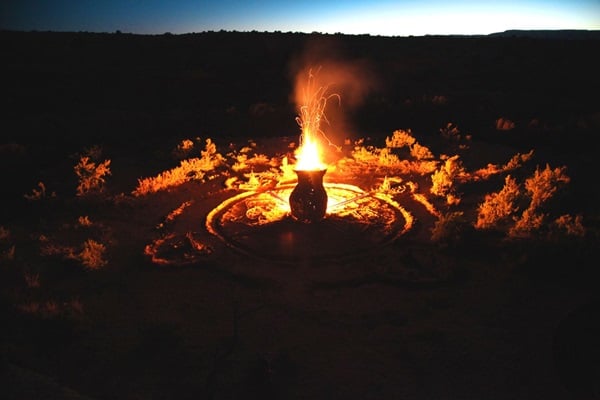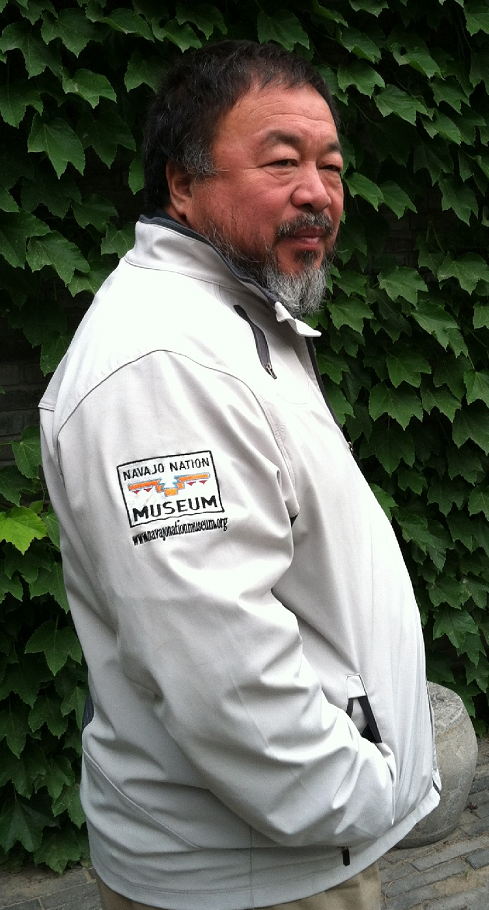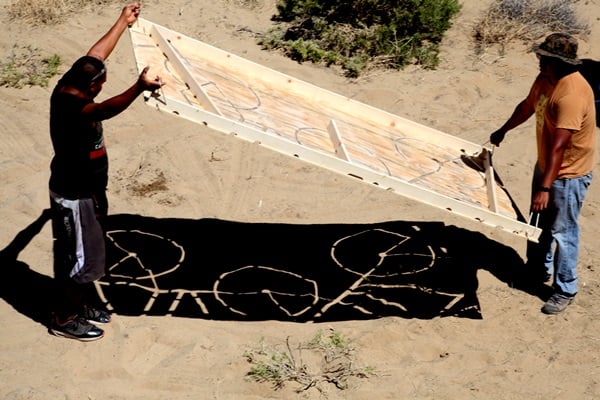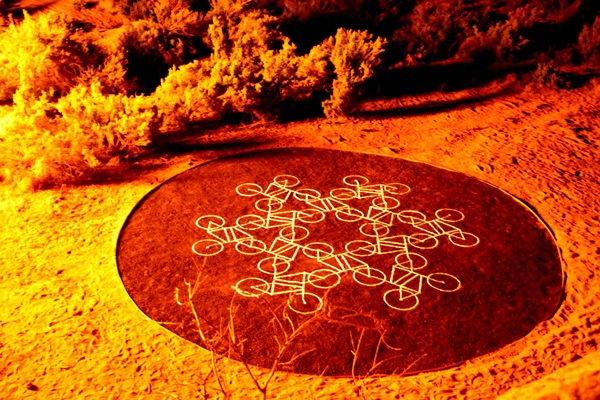Reviews
Ai Weiwei’s Unexpected Navajo Art Collaboration
An obscure New Mexico art festival gets a superstar visitor.

An obscure New Mexico art festival gets a superstar visitor.

Ben Davis

Over the weekend, one of the world’s most famous artists debuted a brand new, large-scale collaborative work in the US, and almost no one noticed.
The artist is Ai Weiwei, the political firebrand who is still restricted from travelling after running afoul of the Chinese government several years ago. The work, dubbed Pull of the Moon, is a collaboration with the Navajo artist Bert Benally, for Navajo TIME (Temporary Installations Made for the Environment), a nine-year-old art event focused on bringing temporary, site-specific art to the Navajo nation. If you want to see it, get ready for a hike: It is sited deep, deep in the desert of the Southwest, amidst the dramatic scenery of Coyote Canyon.

Bert Benally’s installation Pull of the Moon, part of Navajo TIME 2014. Photo: Robert Schwan.
Compared to Ai, Benally is a relatively unknown figure, partly because, despite the fact that he is committed to working in a contemporary art idiom, he is also committed to making art that speaks to the Navajo community. “I’ve had a lot of opportunity to do things off the Rez, and I’ve never really taken to them because, like I said, a lot of my art is with a Navajo audience in mind,” Benally explains in a video about the conception of Pull of the Moon. (He is also an elementary art teacher and part-time adjunct art faculty at Diné College in Shiprock, New Mexico.)
How did Pull of the Moon come about? Organizers looking to boost the profile of Navajo TIME decided to reach out to Ai last year through his studio. To their surprise, he agreed. “For him to be interested in a project like this is like one in a million,” Santa Fe art advisor Eileen Braziel, who suggested contacting the Chinese artist, told the Albuquerque Journal. “He immediately said he was interested.” Apparently, the dramatic landscapes of Coyote Canyon reminded the artist of the labor camp where he had grown up in Western China during the Cultural Revolution.

Ai Weiwei wearing Navajo Nation Museum Jacket at his studio in Beijing
Photo: Chuck Zimmer
After corresponding with Ai via email, Benally traveled to Beijing in March to discuss the project. The final Coyote Canyon project, which opened on Saturday, consists of a pair of large earth drawings, one by each of the artists.

Installing Ai Weiwei’s contribution to Pull of the Moon in Coyote Canyon.
Photo: Robert Schwan.
Ai had some 250 pounds of ground-up pottery shards from his studio shipped from China to New Mexico. These were then sifted onto the ground to form a figure depicting a swarm of interlocking bicycles, a reference to one of is most well-known works.
“The shards were intentionally placed there as evidence of the powder’s origin,” Ai explains in a press release about Pull of the Moon. “I think this is an interesting idea because we can only see ourselves, our past, through material evidence such as these shards. It is important to pass on to future generations where we are from and to give a glimpse of the mind and soul of the people living in that time.”

Ai Weiwei’s contribution to Navajo TIME in Coyote Canyon.
Photo: Robert Schwan.
Benally’s own earth drawing is a medicine wheel indicating the four cardinal directions. For the debut weekend, a small group of viewers was treated to a banquet at the site, as well as a spectacular happening. An urn placed at the center of Benally’s drawing, symbolizing stereotypes about Native American culture, was burned away to reveal a metal sculpture of a cornstalk, symbolizing the authentic core of traditional beliefs.

Plan for the “digital dome” at the Museum of Contemporary Native Arts as part of Navajo TIME 2014.
Despite the collaboration’s remote location and temporary nature, Navajo TIME has an ambitious plan to bring Pull of the Moon to a wider audience. From July 16 to October 16, it comes to the Museum of Contemporary Native Arts (MoCNA) in Santa Fe in the form of a high-tech dome installation (from xRez Studio) that allows visitors to interact with a 3-D film of the Coyote Canyon works. A documentary, The Making of Pull of the Moon by Daniel Hyde and Blackhorse Lowe, is also in the works.